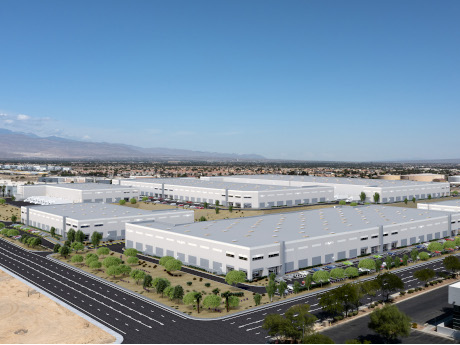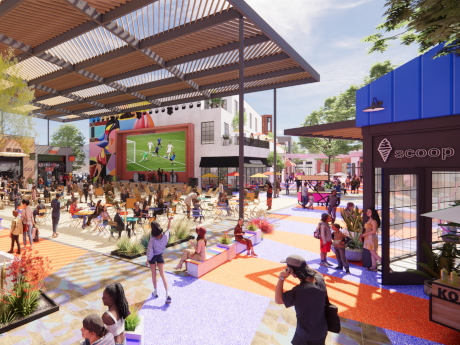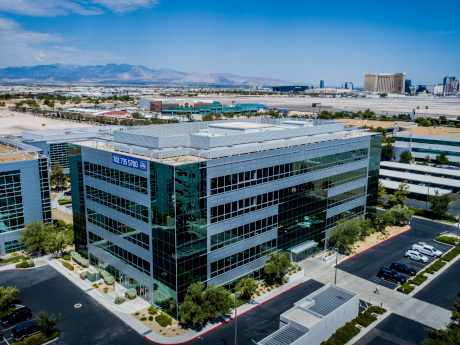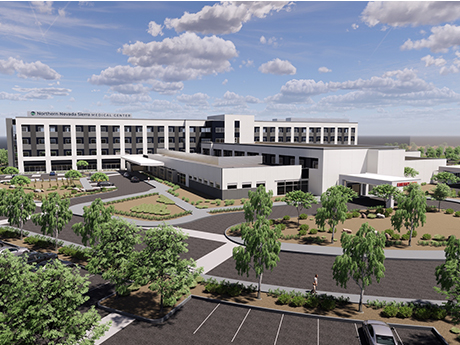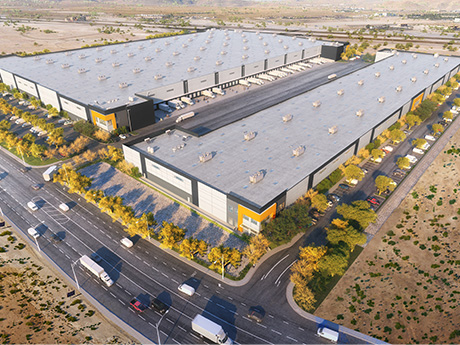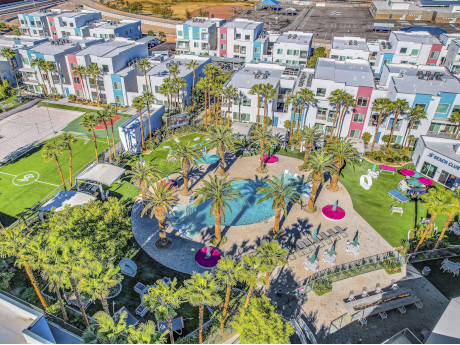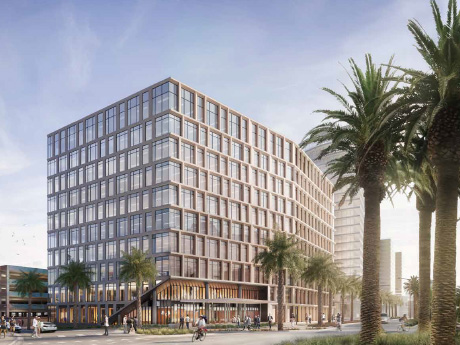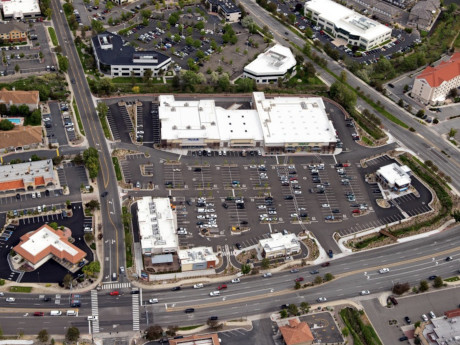By Dean Willmore, Executive Vice President; Kyle Kirchmeier, Associate; Alex Stanisic, Vice President; and Laura Wilhelm, Senior Field Research Analyst, CBRE Las Vegas’ current industrial market is surprisingly resilient. There is, of course, a possibility of planned projects being put on hold or not moving forward at all due to rising inflation and economic uncertainty, but leasing activity hasn’t slowed. Regardless of never-before-seen rent growth, record-low vacancy and a marked increase in asking lease rates every 60 days, the market still may not have peaked. As of the third quarter of 2022, the average asking lease rate was $1.19 per square foot (triple net), and the overall vacancy rate remained at a very low 1 percent. However, industrial/flex space in the 2,000- to 5,000-square-foot range, which is still dealing with the effects of the pandemic, has shown no noticeable rent growth. Some landlords are even offering leasing incentives to attract tenants. If the market contracts in 2023, smaller tenants in this size range will be the first to see its effects. Nearly half of the 17 million square feet under construction during the third quarter was pre-leased, and nearly 80 percent of those projects were in North Las Vegas. The largest lease of the quarter occurred in the submarket, with …
Market Reports
By Cathy Jones, Founder and CEO, Sun Commercial The 2022 Las Vegas retail market can be characterized by a generally positive outlook and some strong trends, even in the face of market uncertainty. A few of these core trends are quite interesting. Market research shows significant upward trends in asking rents, decreases in vacancy and certain key indicators driving this process. When broken down further, we find that these trends are emphasized in certain geographic areas more than others. The Southwest Las Vegas Valley submarket is seeing the greatest change in growth and development, followed closely by Henderson/Southeast. As an example, 93,592 square feet of retail space was constructed in the third quarter alone in the Southwest and Henderson; 91.2 percent of this space was pre-leased. The current amount of net absorption in the total market is 1.3 million square feet year to date. Half of this annual total occurred in the Southwest and Southeast submarkets. These two markets saw an explosion of growth driven largely by the housing boom. As new developments are constructed and homes sold, retail developments expand to meet that growing demand. There is more compartmentalization, however, than in the past with more community-oriented unanchored strip centers dominating the …
By Patti Dillon, SIOR, Senior Vice President, Colliers While the key measures of the Southern Nevada economy have improved since the COVID lockdowns, some have improved more than others. The future of the office market is strong, but it will be weighted toward newer Class A mixed-use office assets. Employers are feeling the pressure to attract and retain the best talent in a tight labor market. There are plenty of vacant positions. However, available and willing workers are still scarce, which is driving the need for office locations of employers to be more inviting. According to DETR, Southern Nevada’s office job market added 24,000 jobs between May 2021 and May 2022. Unemployment in the Las Vegas-Paradise MSA was 5.2 percent in May 2022. Over the past 12 months, total employment in Southern Nevada increased by 87,100 jobs, a 3 percent increase. After experiencing a significant expansion last quarter, Southern Nevada’s office market cooled at midyear. Net absorption remained positive, at 45,443 square feet, but did not keep pace with the 129,272 square feet of new development. This lifted vacancy to 12.7 percent this quarter from 12.5 percent one quarter ago. Asking rental rates increased to $2.37 per square foot on a full-service …
By Nick Knecht, Senior Advisor, Industrial, Dickson Commercial Group The vibrancy and growth of the Reno-Sparks industrial market has solidified the region’s position as a premier distribution hub of the Western U.S. — even as we head into what is expected to be a nationwide economic slowdown in the near term. The third quarter continued the trend of positive net absorption of 469,970 square feet. This occurred even with four new construction deliveries totaling 1.7 million square feet, 98 percent of which was spoken for upon completion. This momentum is expected to continue to some degree, as our team is actively negotiating RFPs on each of our speculative big box listings, with space requirement inquiries coming in at a steady pace. Alongside this positive activity, our market has been affected by the economic turmoil that has started to take shape over the past two quarters, with similar trends discussed nationwide. A changing debt market has produced several price adjustments mid-transaction for buyers to stay within their underwriting thresholds. The number of developers aggressively acquiring land at a feverish pace has decreased as they face a higher cost of capital and tamp down rent growth assumptions to more reasonable levels. There …
By Melissa Molyneaux, Executive Vice President, Colliers Northern Nevada’s office market has continued to post strong fundamentals this year. Positive tenant demand has improved vacancy in recent quarters, though an uptick in available sublease space could impact market-wide vacancy in the future. The Reno-Sparks region has also seen a handful of new speculative office construction starts that will add trophy office and medical office space to the downtown and South Meadows submarkets. Strong economic recovery has been evident this year as Nevada reached a new employment peak of nearly 1.5 million jobs in June. Washoe County’s population has grown an impressive 17.1 percent since 2010, to 500,000 people. A study by Woods and Poole Economics estimates the area will reach 764,000 people by 2060. Market-wide vacancy rates dropped to 10.6 percent in the third quarter of 2022, down 200 basis points year over year. Downtown vacancy fell 310 basis points to 11.7 percent, while suburban vacancy fell 180 basis points to 10.3 percent in the same period. Vacancy has continued to improve since the onset of the pandemic, though the Reno area has started to see an increase in available sublease space hitting the market. About one quarter of all …
By Paul Sweetland, Senior Vice President, Colliers After a record year in 2021, Southern Nevada’s industrial market does not appear to be slowing down. The first-quarter vacancy decreased to 1.7 percent with 2.9 million square feet of net absorption. This is the lowest vacancy rate we have ever recorded in Southern Nevada. For comparison, vacancy only went as low as 3.1 percent during the boom that preceded the Great Recession. Demand was positive for all industrial subtypes for the first quarter, while rents for warehouse and distribution space increased 46 percent year over year. All industrial sectors added jobs on a year-over-year basis, with the largest increase being in logistics, which added 8,100 jobs. The current industrial boom has been driven by the influx of relocations and expansions from all over the U.S., but primarily from California. Southern Nevada’s strategic location, with its ability to service 12 markets within one day, has also made it an ideal location for regional and national distribution. New industrial completions totaled 2.1 million square feet this quarter, almost all of it being warehouse/distribution product. Southern Nevada is in its third major wave of post-Great Recession industrial development, with more than 8 million square feet now under …
By Adam Schmitt, First Vice President, CBRE | Multifamily Investment Properties The multifamily construction pipeline in Las Vegas has ramped up in recent years and continues to be robust. Apartment developers have long capitalized on the growth of the Las Vegas market, and with the vast potential remaining in the city, multifamily builders are continuing to place their bets in Vegas. Our team at CBRE tracked a total of 4,317 multifamily units constructed in 2021, and are projecting more than 8,000 in 2022, with at least 16,000 in 2023 and beyond. For reference, over the past 10 years, the Las Vegas multifamily market has delivered about 3,700 annual units on average. The projects being built in Las Vegas are predominately luxury, Class A developments that tend to cater to the lifestyle renter or renter-by-choice demographic. The locations of these developments are mostly concentrated in the Southwest and Henderson submarkets, comprising 62 percent of the construction pipeline. Developers have historically flocked to these submarkets because of the areas’ respective demographics, perpetual growth and strong multifamily fundamentals. More recently, multifamily developers have found opportunities in the Northwest and North Las Vegas submarkets as those regions have seen years of high rent growth, and the rent …
By Ryan Sarbinoff, First Vice President and Regional Manager, Marcus & Millichap A growing, educated local labor force and lower rents compared to other office hubs in the region are driving office tenants to Las Vegas. The metro registered the largest drop in office vacancy among major U.S. markets over the 12-month span that ended in March, as tenants absorbed more than 2 million square feet. Much of this space was at Class B/C properties, with the subsector noting the strongest four-quarter span for demand on record. The resulting 330-basis-point reduction in overall availability during the year-long period slashed vacancy to a more than 15-year low of 12.4 percent, enhancing the sector’s outlook heading into the second quarter. The metro’s second-largest submarket by inventory, Southwest Las Vegas, exemplifies the strength of the local office sector. During the past year, the area accounted for half of the metro’s 20,000-square-foot-plus lease executions. International Gaming Technology’s sublease of a three-story building highlighted recent activity, with VisCap Media, Agilysys, DraftKings, Kiewit and Molina Healthcare all making notable commitments that dropped vacancy to 9.4 percent in March. Apart from leasing, this submarket is also the center of development. Roughly 60 percent of the space slated for completion …
By Bret Nicholson, Retail Specialist, Marcus & Millichap Reno’s retail sector is setting records as of February 2022. Vacancies are hovering near an all-time low of 4.9 percent, and asking rents have risen to new heights, averaging $1.72 per square foot on a monthly basis. Sellers are achieving cap rates comparable to those seen in core markets, resulting in sale prices that many would not have thought possible only a few years ago. A number of factors have contributed to the continued absorption of retail vacancies in Reno. On a local level, Reno now has roughly 150 percent more six-figure jobs compared to 2015. This allows for more discretionary retail spending. In addition, very high construction costs and development delays have forced businesses to consider repurposing existing retail space. For example, a 24 Hour Fitness shuttered at 6155 Neil Road, leaving behind a vacant 24,000-square-foot special-use building. Not long after the health club’s exit, the Coral Academy of Science began renovating the space and is now an operational elementary school. Despite many vacancies having been repurposed and filled since 2020, demand for retail space in Reno continues. About 265,000 square feet of new construction is expected to be completed in 2022, which will be …
By Shawn Jaenson, Senior Vice President, Industrial Specialist, Kidder Mathews The Northern Nevada industrial market is composed of 98.7 million square feet of industrial real estate spread across six submarkets. Northern Nevada’s centralized location allows for a one-day truck service to more than 60 million customers. Couple that with the fact that Nevada has no corporate tax, personal tax, inventory tax, franchise tax, or special intangible tax and the city is one of the most desirable industrial locations in the Western U.S. What was once thought of as unattainable in Northern Nevada has become the norm as nearly every record or statistic has been shattered and the market continues to show no signs of slowing. The overall market vacancy rate plummeted in 2021 to 1.7 percent, with a direct vacancy rate of 1.6 percent — a more than 200 percent decrease from the start of the year when overall vacancy rates were 5.3 percent and direct vacancy rates were 4.9 percent. Due to the unprecedented demand, new product in Northern Nevada has never been more crucial as new construction struggles to keep pace with market demand. In 2021, Northern Nevada had a positive net absorption of just over 7 million square feet, which …


